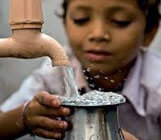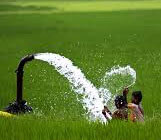Renewable Energy
The cost of laying transmission lines is exorbitantly high. This cost is justified where population is concentrated and heavy but when the remote and very thinly populated small towns and villages are to be electrified then the cost simply becomes prohibitive.
Remote areas which cannot be connected to the grid, can however be economically electrified using alternate sources of small power generally made available from renewable energy sources like-
- Solar energy
- Wind energy
- Bio gas
Remote areas need power just enough for providing essential services such as domestic lighting, water pumping, communication and medical facilities.
Solar Energy
There is an ever-growing demand across the world for rural electrification using solar energy. The important part of PV system are the cells which form the basic building blocks, the modules which bring large number of cells into a unit called Solar Panel.
We undertake design, engineering of solar power products and systems for industrial and household needs. The ranges of products include:
- Photovoltaic cells modules/ panels
- Street Lighting systems
- Water pumping systems
- Power systems for homes, offices and telecommunications
Solar Power Plants
Solar Power Plants in modules of 5 MW and multiple units adding upto 100 MW and beyond is newest concept to add power to the grid. Though capital intensive but scores high on low running and maintenance costs. They are extremely useful in high sun light regions of North Africa.
Wind Energy
Wind turbines are playing important role due to increasing contribution of wind energy to production of electricity. They also help in maintaining stability of grid operations.
We offer powerful wind turbines harnessing maximum energy from the available wind and with low sound levels. High performance cooling system of gearbox and radiators makes it ideal for hot climates.
Bio Gas
Biogas is a renewable fuel and typically refers to a gas produced by the biological breakdown of organic matter in the absence of oxygen. Organic waste such as dead plant and animal material, animal dung, manure, sewage, municipal waste, green waste, plant material, crops and kitchen waste can be converted into a gaseous fuel called biogas.
Biogas comprises primarily gases like methane, hydrogen, and carbon monoxide that can be combusted or oxidized with oxygen. This energy release allows biogas to be used as a fuel for any heating purpose, such as cooking or used in a gas engine to convert the energy in the gas into electricity, heat or to power motor vehicles.
Domestic biogas plants
Domestic biogas plants convert livestock manure and night soil into biogas and slurry, the fermented manure. This technology is feasible for small holders with livestock producing as low as 50 kg manure per day.




















